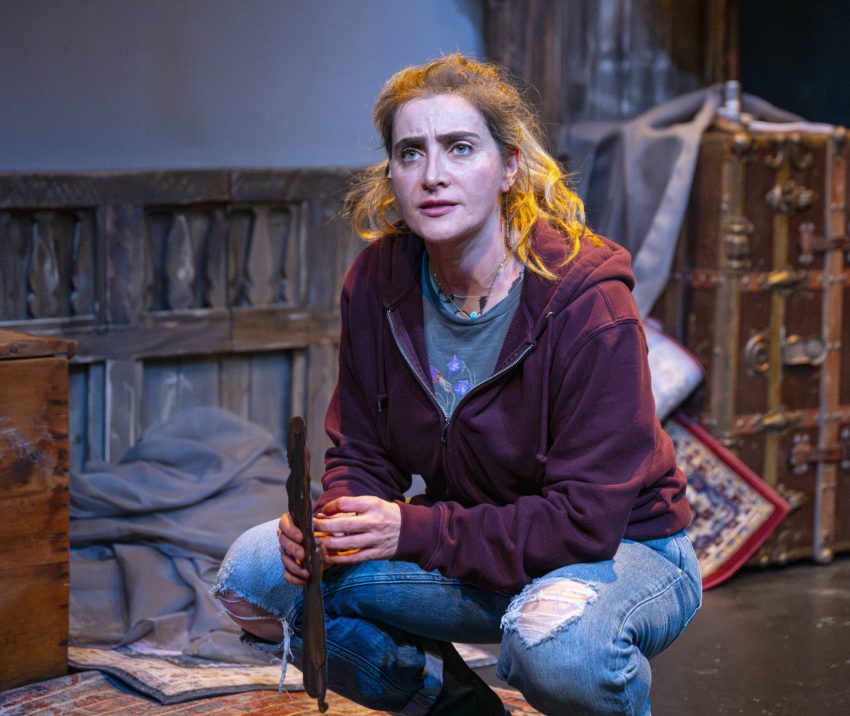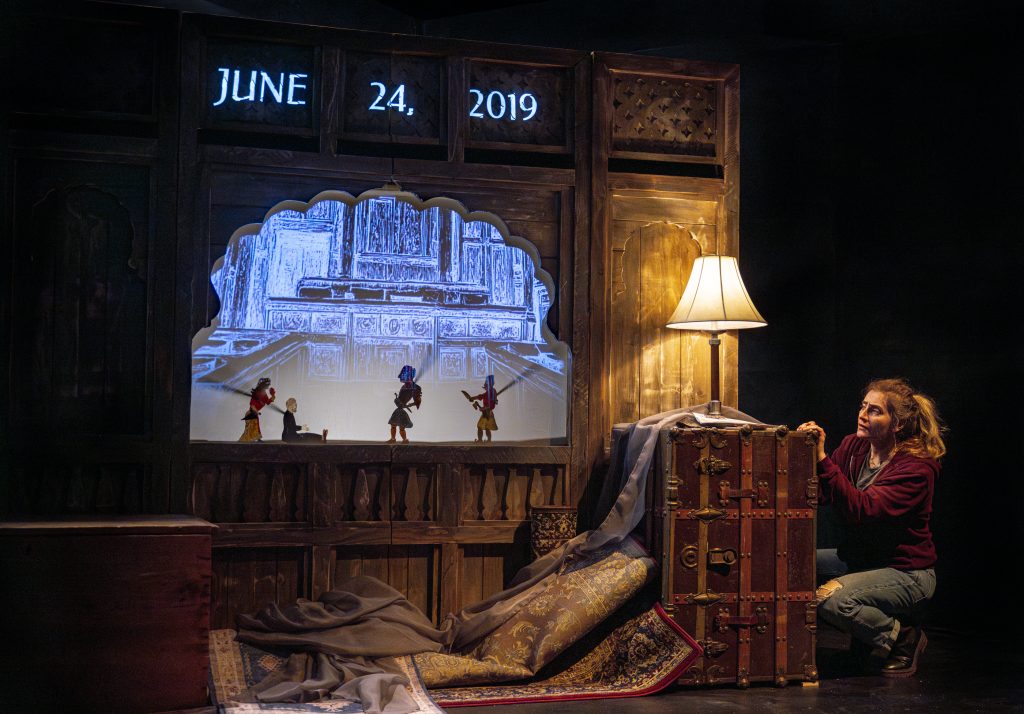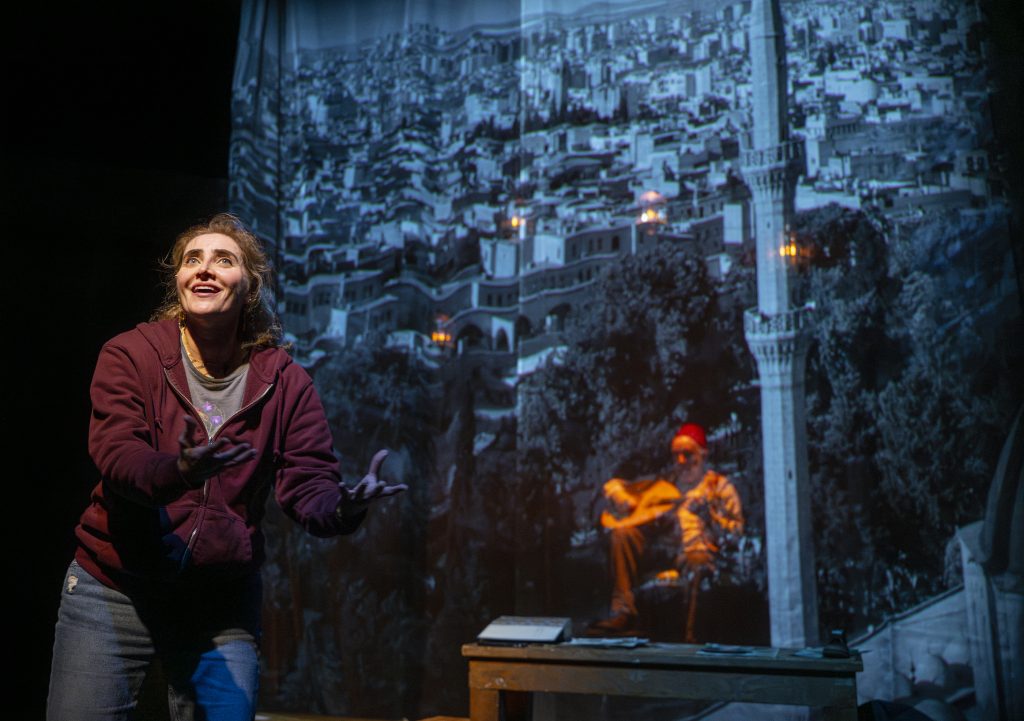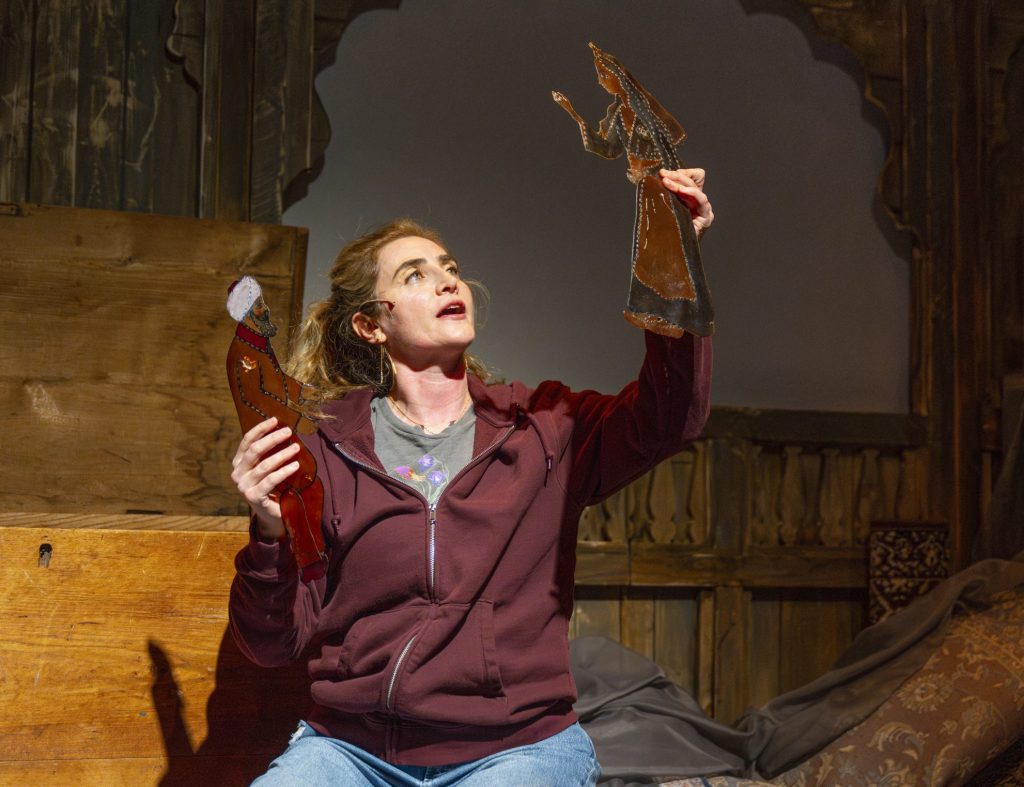
“AZAD (the rabbit & the wolf)” Unleashes People & Puppets—at Golden Thread
Sona Tatoyan’s Powerful Story Alarms Kingdoms of Silence
by Pina Piccolo
Premiering to the world in a packed house at Potrero Stage, Golden Thread and Hakawati NGO’s co-production of “AZAD (the rabbit and the wolf)” challenges us with a dynamic, immersive experience that informs and entertains. The complex story brims with intriguing questions and objections, as a successful piece of theater must in these times.
On a set suggesting the attic of a Middle Eastern home, writer/performer Sona Tatoyan tells her own story in an engaging tour de force, alternating between Hakawati-style storytelling and confrontations with the shadow puppets of the Karagöz tradition. She battles with the aggressive puppets over identity, trauma, the nation-state, the enemy, memory, and her family. She frames her story within the early twentieth century Armenian Genocide and successive waves of forced migrations.

The role of art pops in through a trunk hidden in an Aleppo attic, containing the puppets from Sona’s great grandfather Abkar Knadjian, who fled with his family and theater to Syria in 1915. With the locales shifting from Anatolia to Syria, Turkey, and the United States, the set of shadow puppets breaks the boundaries of Middle Eastern traditions.
Tatoyan, a powerfully emotional actor, welcomes Western allegorical characters: Lewis Carroll’s rabbit and Red Riding Hood’s wolf. The comic characters become a tribunal convened to question the actor about her vision of truth, justice, and human action. Irreverent and subversive, the puppets insist on Sona’s acknowledging the shadow and the light, essential elements of an allegory for the gamut of human experience.

A shift, in fact, occurs about twenty minutes into the play, when the puppets demand that the storyteller deepen her understanding of Scheherazade’s storytelling tricks in The Thousand and One Nights. She must choose her own voice, finally. The unruly puppets even call out the audience, insisting that her story of women, migration, and trauma turn into a challenging reflection on storytelling as healing. Sona is forced to acknowledge her family’s varied responses to their own trauma and consciously chooses her own voice and stand, as the various characters had allegorically done in the framing story of One Thousand and One Nights.
Sona explicitly calls on us to reflect on our own positions and actions, when a series of headlines appears and disappears on the curtain of the puppet theater. She reminds us that we are but a “Fractured audience from a frayed Empire.” Having been enlightened about the meaning of the rabbit and the wolf, the last line of the play reveals the nature and identity of Azad, beyond its literal meaning of “free” in Persian.

As a parting gift to the audience, a cardboard sign detailing the case of Turkish scholar-activist Osman Kavala, founder of Anadolu Kultur, illustrates the real-life consequences of standing with the victim, while being part of “the enemy.” If we inhabit a “kingdom of silence” such as Turkey, we are suspect.
Osman Kavala, the professor who encouraged Sona to pursue her family’s history of trauma in the Armenian Genocide, is still languishing in a Turkish prison, He was falsely charged with participating in the 2013 Gezi Park protests and received a life sentence. The sign that appears onstage is an appeal to stand in solidarity with the jailed activist, a stark reminder of situations that are increasingly part of the fabric of our own reality in the U.S.
“AZAD (the rabbit and the wolf)” by Sona Tatoyan, in collaboration with Jared Mezzocchi, directed by Jared Mezzocchi, with Karagöz Puppeteers Vincent Mraz and Kalli Siringas, animation by Abkar Knadjian, oud played by Ara Dinkjian, co-produced by Golden Thread Productions and Hakawati NGO, at Potrero Stage, San Francisco. Info: goldenthread.org – to May 3, 2025.
Cast: Sona Tatoyan—and Abkar Knadjian’s Karagöz Puppet Tribe.
Banner photo: Sona Tatoyan. Photos by David Allen Studio